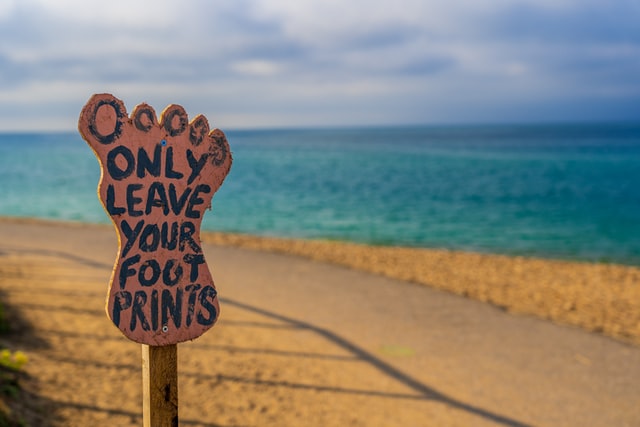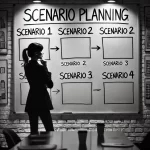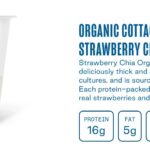Sustainable Business Plan Pillars
The days of the one-hundred-page business plan decks are a thing of the past. These days, a business plan can be one-page.
But your plan needs to clearly articulate the basics – what makes you different, who you will serve, and why you deliver unique value beyond the category’s table stakes.
Today, environmental issues severely impact our society and our perceptions of value. Many new businesses are thinking about these issues as they create their business plans and look for a meaningful hook to differentiate their offering.
Sustainably focused businesses can also define your niche in the marketplace by putting the environment front and center, while others are more interested in other value pillars.
Think of an organic dry cleaner – whose business model is different from dry cleaners using traditional chemicals and processing to clean versus alternative means. ë:Clean is an example of a dry cleaning business using liquid CO2, which they claim lasts 4X longer gives you no shrinkage, color loss, heated dry-cycle, or odor. Their value is crisp – meant for those who need dry cleaner but what environmentally-friendly supplier.
Or a winery like Red Thumb that declares all their ingredients and nutritional facts isn’t required or standard practice. They claim that they are here for the [ sustainable ] party people. By sharing the three ingredients in the wines, they separate themselves from the majority of wines that don’t declare or share this information.
Often, the word green can be a shorthand descriptor for an environmentally focused or friendly business. I’ll use that term cautiously in this post, but be mindful that greenwashing is dangerous. It is the practice of pretending you are doing good for the environment by slapping words like green, sustainable, or environmentally friendly on a business or product.
Determine Which Type of Green Business You Will Start
There are many ways that green businesses can help and protect the environment. Be specific in telling your story about how you’ll fit into the sustainable ecosystem, whether you are focused on recycling waste or creating carbon natural green coffee like Starbucks. Conserving water for Starbucks is one of its value pillars.
“In 2020, Starbucks committed to a resource-positive future, formalizing environmental goals to cut its carbon, water, and waste footprints by half. As a progression against those goals, the company commits to Carbon Neutral Green Coffee and to conserve water usage in green coffee processing by 50%, both by 2030.”
Find Existing Sustainable Businesses that Align with Your Goals
Researching sustainable businesses can help you better understand what it takes to create a company anchored in best environmental practices. During this process, you’ll also evaluate the market competition, which can help you refine your unique selling point.
Is your green business family-owned like Kleen Kanteen and focused on reusable products?
“As a family and employee-owned company, we’ve never been afraid to go all-in on big ideas, but this might be our boldest move yet. We are switching to certified 90% post-consumer recycled 18/8 stainless steel!”
Or are you an apparel company like Reborn Clothing that uses existing fabric products like old T-shirts to repurpose them into new goods? They call this upcycling, and it is core to their brand.
Creating a Sustainable Business Plan Framed by Environmental Pillars of Concern
2017, Reborn Clothing Co. Founder and CEO Emily Neville was a sophomore at NC State when she realized an upcycling gap in the textile industry. What first started as a way for individuals to get clothing out from the back of their closets and made into new products quickly uncovered a massive opportunity for a textile waste reduction on a larger scale. Today, Reborn has grown to offer sustainable solutions to organizations of all sizes. Operating from their headquarters in North Carolina, Reborn works with top brands and institutions to transform surplus branded apparel and textile waste with reliable upcycling, downcycling, and corporate gifting solutions.
Another great brand to study is clothing company Patagonia as a valuable business model to study.
A Green Business Plan and Product Roadmap
You’ll need to create a business plan and consider using a product roadmap which will serve as an internal guide and a resource for investors and potential funding sources. If this is your first business plan, make sure to research templates because there are standards and expectations about what information should be included.
Some key points to include in your sustainable business plan:
- Executive Summary: Provide an overview of your business and how you propose to enter the market.
- The Problem: It’s essential to address the problem your business will solve.
- Proof Points: How will you demonstrate your Bonafede’s? What evidence will they have of your green credentials?
- Market Overview: Who will benefit from your business or use your product? What’s the competitive landscape?
- Business Goals: What do you want to achieve, and when do you want to achieve it?
- Plan to Achieve Key Objectives: Set milestones and build a plan to reach or surpass them.
- Financial Forecast: This usually includes the first year and covers how much money you need for your business operations. You can try to plan beyond one year, but in my experience, don’t invest too much time in those motions.
Marketing Your Brand
To grow your audience and attract new customers, you’ll need to market your business to raise awareness and share your story. Make sure you are clear on your unique value proposition and who you will serve before spending money to promote a brand, your need clarity about your core messaging and who you do. This article about green marketing also provides some helpful insights.
- What type of person cares about organic dry cleaning?
- Are you developing an alternative to bricks that use a tremendous amount of energy with a disruptive technology for commercial builders like BioMason? How can you reach this audience, and what will you say?
Start Your Sustainable Business Today
Establishing and growing a business requires a good idea and perseverance. Having a professional strategist with you can help prepare your brand for a successful launch. You want to communicate authentically and with transparency.
But the starting point for planning a green pillar of success is to get clear about what problem you will solve and who will care that you exist?
Build your business plan with a laser-like focus that relieves a pain point for the environmentally-sensitive consumer or business.
This is a guest post collaboration with Jeff Slater and Marcus Lansky, founder of https://abilitator.biz Marcus was born with a spinal condition so severe that his parents were told he would never walk. Lansky was a spunky child, and despite all the odds against him he learned to walk with the help of countless doctors, physical therapists, and cheerleaders.
You can set up a time to chat with me about your marketing challenges using my calendar. Email me jeffslater@themarketingsage.com Call me. 919 720 0995. The conversation is free, and we can explore if working together makes sense. Watch a short video about working with me.
Photo by Nick Fewings on Unsplash





